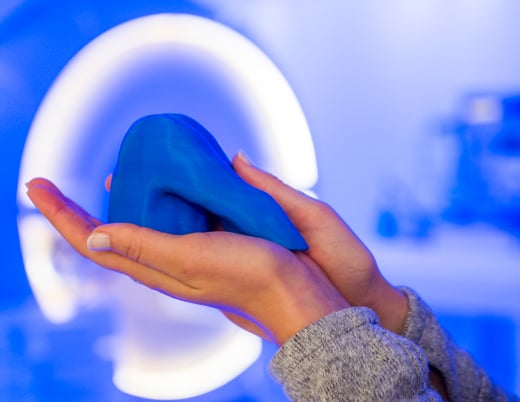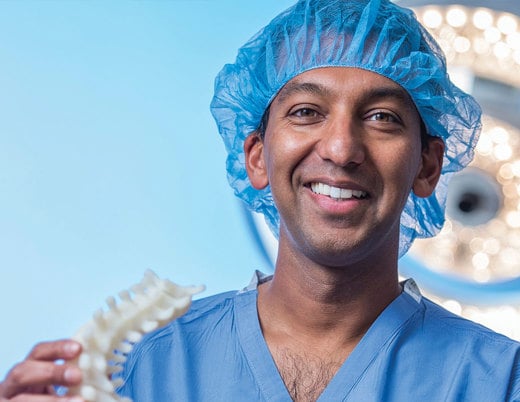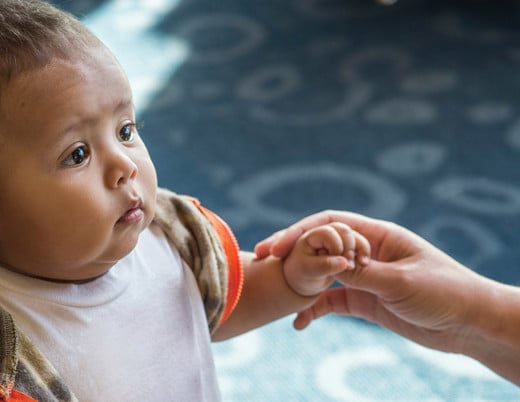Key takeaways
-
This study sought to determine how quickly athletes could return to play after PSF for AIS.
-
Participation in contact sports was associated with a longer return to sport.
-
There was a rapid return to baseline sports performance when released with no restrictions at 1 to 2 months.
There have been few studies evaluating the time to return to sports after posterior spinal fusion surgery (PSF) for adolescent idiopathic scoliosis (AIS). Return-to-play protocols vary widely and are based on expert opinion; most surgeons generally permit return to sports 3 to 6 months after surgery.
Sumeet Garg, MD, from the Orthopedics Institute at Children’s Hospital Colorado and other researchers have found athletes in their care wish to return to sport sooner than three months. At the first postoperative visit between 1 to 2 months after surgery, Children’s Colorado patients are cleared to self-progress to full activity without restrictions if they are healing as expected.
This study aimed to determine how quickly athletes return to baseline sports activity at the pre-surgical level of play after PSF for AIS when released from restrictions by their surgeon at one to two months.
Methods: post-surgical review of athletes’ outcomes after posterior spinal fusion
The single-center prospective study enrolled athletes between April 1, 2018, and September 30, 2019.
Inclusion criteria:
- 10 to 18 years old at time of surgery
- Scoliosis diagnosis with a major Cobb angle between 40 and 75 degrees
- Participates in athletics at high school or club level at least three months a year
- At least two years beyond post-surgical follow-up

Surgical technique
Two Children’s Colorado orthopedic surgeons performed the PSF using pedicle screw constructs.
Data collection
- Demographic and sports participation information was collected prior to surgery.
- Participation classified as contact, limited contact or non-contact
- Athletes completed preoperative sports performance and Patient Reported Outcomes Measurement Information System (PROMIS) physical activity, pain interference and depressive symptoms questionnaires.
- At first post-operative visit four to eight weeks after PSF, athletes were released to return to all activities as tolerated with no restrictions.
- Patients completed monthly self-reported outcomes surveys and questionnaires until 1-year follow-up.
- X-rays were taken at the 1-year follow-up visit.
- Patients were contacted by phone to assess for complications at 2-year follow-up.
Primary and secondary outcomes measured
Primary
- Patient-reported return to sports participation at their pre-surgical level of play
Secondary
- PROMIS physical activity, depressive symptoms and pain interference scores
- Documentation of any postoperative complications
Results: return to play timeline after posterior spinal fusion, changes in post-surgical PROMIS scores
Of the 26 athletes included in the study, 20 were female and 6 were male
- 33 months median duration of follow-up
- 61.5% participated in non-contact or limited contact sports
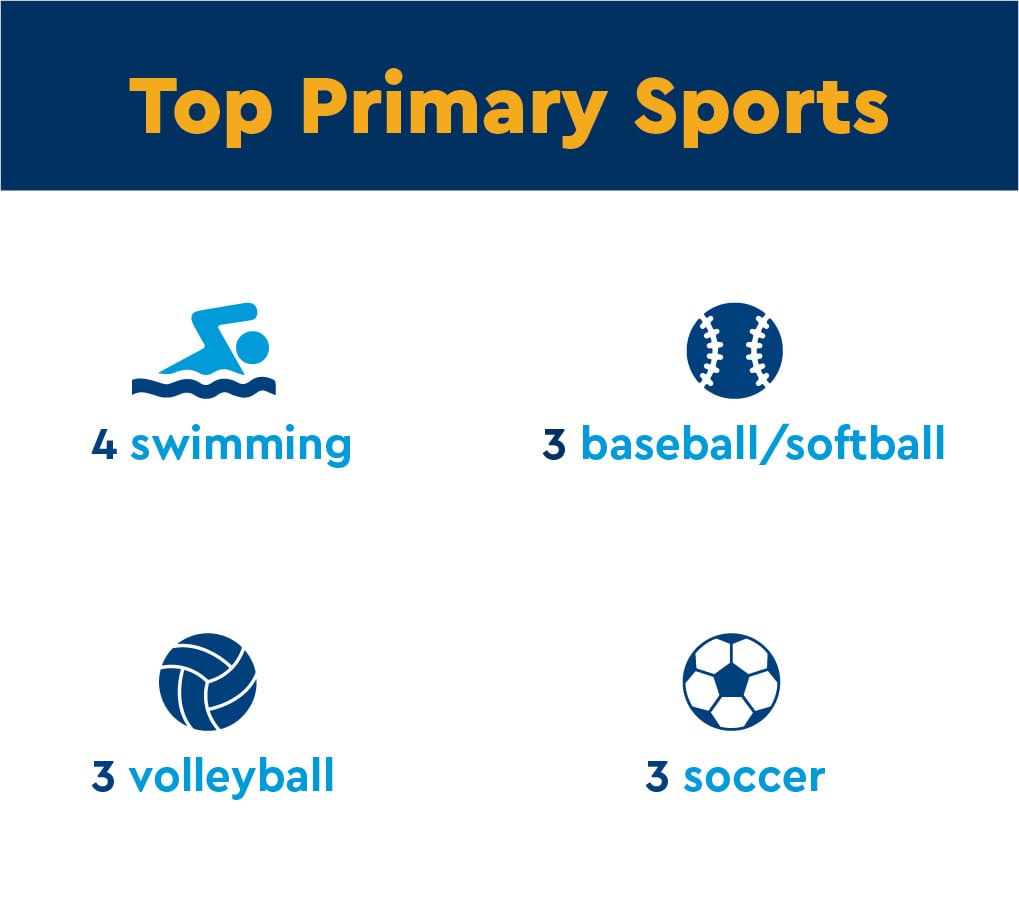
Return to play timing
- 2.7 months median duration of return to sport
- 24 of 26 athletes had returned to the sport at 12 months
Contact level
Level of contact was only variable significantly associated with the timing of return to sport
- Non-contact sports: 2.2 months median
- Contact sports: 4.7 months median
- No difference in length of fusion between contact and non-contact sports
Lowest instrumented vertebra (LIV)
LIV significantly different between the two groups
- LIV more cephalad in contact sports on average
- Contact sport group associated with more favorable LIV distribution
- Suggests delay in return to play for contact group driven by factors independent of more favorable LIV distribution
Most common return to play barriers
- 46% conditioning
- 33.3% flexibility
- 21% motivation
PROMIS score changes
All PROMIS scores were in average range prior to surgery.
Physical activity
- Significant increase in physical activity scores during the first 12 months after surgery
- This change did not significantly depend on baseline PROMIS physical activity level or participation in a contact sport
- Significant interaction between physical activity changes and pre-operative Cobb angle
- Greater change in athletes with more severe Cobb angle
Pain interference
- Significant decrease in likelihood of a symptomatic pain interference score in the first 12 months after surgery
- Changes not dependent on
- Baseline pain interference scores
- Participation in contact sport
- Pre-operative Cobb angle
Depressive symptoms
- Significant increase in the likelihood of a symptomatic depressive score in the first 12 months after surgery
- Changes not dependent on
- Baseline depressive symptom
- Participation in contact sport
- Pre-operative Cobb angle
- Symptoms reported 6 to 12 months after surgery
- 4 athletes reported mild symptoms
- 2 athletes reported moderate symptoms
Complications
- No major reported complications
- 1 patient experienced suture abscess early on, but was successfully treated and resolved prior to 6-week post-op visit
- Of 21 patients reached at follow-up beyond 2 years, 2 had late complications that are not believed to be related to early return to sports
Discussion: Athletes returned to play after posterior spinal fusion more quickly than previous studies
All study participants returned to sport sooner than previously reported; all were cleared at 1 to 2 months after surgery. The findings highlight that return to sport can safely occur rapidly after PSF.
Rate of sports participation at pre-surgical level or greater:

Study authors note the recent trend in earlier clearance may reflect increasing surgeon comfort with modern pedicle screw instrumentation. This study used all-pedicle screw constructs with an average screw density of 1.6 screws per level.
They reported LIV was important in flexibility challenges related to return to play, which suggests athletes can safely regulate their activity level and reintroduction to higher-risk sports participation.
PROMIS score changes indicated depressive symptoms scores are not situational and may reflect associated mental health conditions. This is the first known evaluation PROMIS depressive symptoms scores in adolescents undergoing PSF for AIS.
Conclusion: Athletes can safely return to sports sooner after posterior spinal fusion
Based on the personal experience and evidence that pedicle screw constructs have low rates of revision and pseudarthrosis, the study authors believe it is safe to resume unrestricted sport one to two months after PSF for AIS. They caution that definitive conclusions cannot be made from this one case series, and further research is warranted.
Featured Researchers
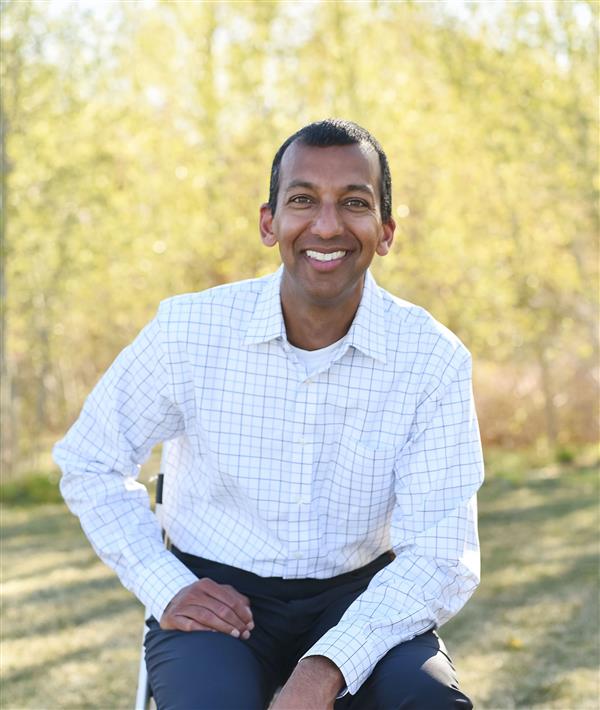
Sumeet Garg, MD
Pediatric orthopedic surgeon
The Orthopedics Institute
Children's Hospital Colorado
Associate professor
Orthopedics
University of Colorado School of Medicine





 720-777-0123
720-777-0123








